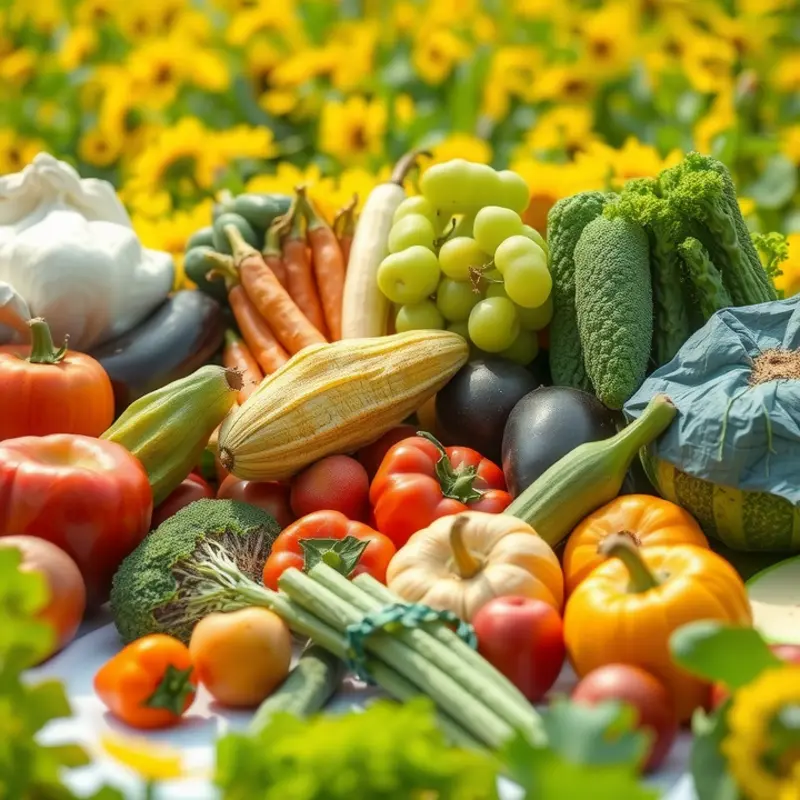Cooking with acidic ingredients adds brightness and depth to dishes, but dietary constraints or ingredient availability can sometimes pose challenges. Fear not! With a few simple swaps, you can maintain that zesty flavor profile without compromising on taste or health. Whether you’re avoiding specific acids or want to enhance your meals with what you have at hand, these swaps will guide you in creating delicious dishes effortlessly.
Understanding Acidity in Cooking

Acidity plays a crucial role in cooking by enhancing flavors and creating balance in dishes. It’s the element that brightens dishes, making them vibrant and refreshing. From a culinary perspective, acidity can also cut through richness, helping to balance flavors and create a more harmonious taste profile. The interplay between acidic and other taste elements like sweetness and saltiness allows chefs to craft complex and tantalizing flavors.
Typically, a dish gets its acidity from ingredients such as vinegar, citrus juices, or even fermented products like yogurt. However, you can easily substitute these depending on your dietary needs or what’s available in your pantry. Understanding these swaps is key to maintaining the desired tartness and brightness in your cooking.
Vinegar Alternatives
Vinegar adds not only acidity but also a nuanced flavor depending on its type. When looking for a replacement, consider the distinctive characteristics of the vinegar you’re substituting. For example, white wine vinegar can be replaced with lemon juice or a blend of white grape juice and apple cider. This keeps the mildness of white vinegar while providing similar acidity.
For balsamic vinegar, which is richer and sweeter, try reducing grape juice with a hint of apple cider vinegar. This mimics the syrupy and tangy nature of balsamic, while maintaining its signature depth. If sherry vinegar is called for, a mix of red wine vinegar with a bit of honey can replicate its sharp and slightly sweet note.
Citrus Substitutes
Lemon and lime juices are prevalent sources of acidity. However, if you’re out or need to avoid them for any reason, alternatives abound. White wine vinegar or apple cider vinegar can often step in for lemon juice, especially in dressings and marinades. These vinegars provide the similar freshness and sharpness that citrus juices offer.
For a less direct swap, consider using tamarind paste. It offers a distinctive sourness that can stand in for lime juice, particularly in Southeast Asian dishes. Tamarind’s unique flavor can elevate your dish to new culinary dimensions, transforming it with a bold twist of tang.
Creative Uses of Ingredients
Beyond direct substitutes, exploring ingredients like sumac can also lend an acidic punch without traditional acids. Sumac is a Middle Eastern spice known for its fruity tartness and can be used in dry rubs or sprinkled over salads for a bright finish.
Additionally, plain yogurt or buttermilk can lend a creamy tanginess suitable for dressings or baked goods. These can be particularly useful for creating a balanced acidity while adding a creamy texture.
For more ideas on enhancing flavor without adding salt, consider exploring this guide on flavor boosters without salt. This can help achieve that desired tang without relying heavily on sodium, ensuring your dishes remain healthful yet savory.
In summary, understanding and mastering acidic ingredient swaps allows cooks to adapt recipes with confidence. Whether due to availability or dietary preferences, these substitutions ensure the vibrant and delicious potential of acidity is never lost.
Simple Swaps for Common Acidic Ingredients

Lemon juice, vinegar, and tomatoes are often go-to acidic ingredients in kitchens worldwide, lending a bright, tangy note to dishes. However, what if your pantry runs low, or you’re seeking a creative shift? Explore simple swaps to keep your meals as vibrant and flavorful as ever.
Yogurt as a Substitute
Yogurt isn’t just for breakfast; it also works as a fantastic lemon juice alternative. Its mild tanginess and creamy texture can enhance salad dressings and marinades. When substituting yogurt for lemon juice, combine with water or milk, as needed, to match the consistency of the original recipe. This creamy twist offers an added nutritional boost with probiotics, perfect when focusing on gut health.
Tamarind’s Tangy Touch
Tamarind, a staple in many Asian cuisines, offers a sour-sweet balance that substitutes well for vinegar or tomatoes. Tamarind paste or concentrate has a dense flavor profile. A little goes a long way—use sparingly and taste as you mix. This powerhouse of acidity effortlessly stars in glazes, chutneys, and even curries, adding a unique depth of flavor.
For those interested in further laying up on useful culinary tricks, check out our tips on easy sauce simmering, where these acidic substitutes can be put to excellent use.
Fruity Alternatives
Some fruits can also emulate the sharpness of acidic ingredients. For a milder punch, pineapple juice can substitute lemon juice, especially in sauces or desserts needing less acidity. Adjust sweetness to taste by reducing other sugars in your recipe. Passion fruit also offers an intense tartness, working beautifully in savory dishes or as a refreshing contrast in dressings and salsas.
Pickle Juice Perks
Don’t toss that pickle juice! It can replace vinegar in vinaigrettes, lending a dill-infused zest. It’s a surprising but effective option for those on a mission to reduce kitchen waste. Moreover, its briny kick can enliven potato or pasta salads, negating the need for added salt—a trick worth exploring if you’re aiming to cut down on sodium.
Buttermilk Bliss
For baking or preparing marinades, buttermilk delivers a gentle sourness similar to lemon juice. It’s ideal for pancakes, muffins, or fried chicken. This ingredient not only adds the requisite tang but also tenderizes, adding a rich moisture.
Exploring these swaps can open new flavor opportunities, especially if you’re experimenting with nightshade-free diets or have specific diet needs or preferences. The creative journey of flavor substitution not only enriches your culinary repertoire but also ensures that your dishes remain deliciously bold and tangy, no matter how the pantry looks.
Final words
Implementing these acidic ingredient swaps not only diversifies your cooking but also accommodates various dietary preferences. By understanding the role of acidity, you’re equipped to create meals that are both flavorful and nutritious. Embrace these substitutions as an opportunity to enhance your culinary skills—experiment, taste, and enjoy the process! Each meal becomes a chance to innovate and enjoy the vibrant flavors that acidity brings, making your dishes healthier and more exciting.







